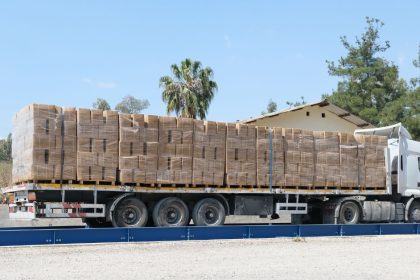
In industries such as transportation, logistics, mining, and agriculture, managing heavy loads is a daily priority. Keeping track of vehicle weights is crucial not only for safety and compliance but also for operational efficiency. This is where a weighbridge comes into play. By providing accurate, large-scale weighing solutions, weighbridges help businesses maintain regulatory standards, streamline workflows, and protect their investments.
What Is a Weighbridge?
A weighbridge is a robust, large-scale weighing platform designed to measure the weight of heavy vehicles and their cargo. Unlike smaller scales that weigh individual items, weighbridges handle entire vehicles—from trucks and semi-trailers to dumpers and road trains—in a single measurement. Typically installed on a solid foundation, a weighbridge integrates advanced load cells, sturdy decking, and high-precision digital indicators to deliver reliable weight readings.
Key Components and Operation
At the heart of a weighbridge’s accuracy are the load cells—highly sensitive transducers that convert force into an electrical signal.
When a vehicle drives onto the weighbridge platform, the load cells measure the resulting pressure, translating it into a precise weight reading displayed on an indicator or transmitted to integrated software systems.
Other essential components include durable steel or concrete platforms, ramps or pit installations for easy vehicle access, weather-resistant enclosures to protect sensitive electronics, and data management tools that store and analyse weight information.
Some modern weighbridges also come with automated number plate recognition and wireless connectivity, enabling seamless integration into a site’s broader operational infrastructure.
Applications and Benefits
Weighbridges are used wherever heavy loads need monitoring. In logistics and transportation, they ensure compliance with road regulations and prevent costly overloading fines. In mining and agriculture, weighbridges verify the weight of bulk materials and commodities, aiding in inventory control and quality assurance.
Manufacturing facilities employ weighbridges to ensure raw materials and finished goods are accurately accounted for, reducing waste and improving profitability.
By using a weighbridge, businesses can confidently assess cargo weights, optimise vehicle loads, and improve safety by minimising the risk of vehicle strain, brake failure, and uneven weight distribution. Moreover, the data collected can inform better inventory forecasting and more strategic supply chain decisions.
Maintenance and Certification
Like any precision equipment, weighbridges require regular maintenance and calibration to ensure accuracy. Engaging accredited technicians for scheduled inspections, cleaning load cells, and checking the structural integrity of the platform are all critical steps.
Many businesses also seek NMI (National Measurement Institute) trade verification, ensuring their weighbridge meets Australian legal standards. Maintaining a certified weighbridge offers peace of mind, builds trust with partners and customers, and safeguards against regulatory penalties.
A weighbridge is more than just a large scale—it’s a vital piece of infrastructure that supports compliance, safety, and efficiency in heavy-duty operations. By investing in a well-maintained, accurately calibrated weighbridge, organisations can confidently navigate the complexities of modern logistics, protect their bottom line, and maintain a reputation for reliability and quality.





